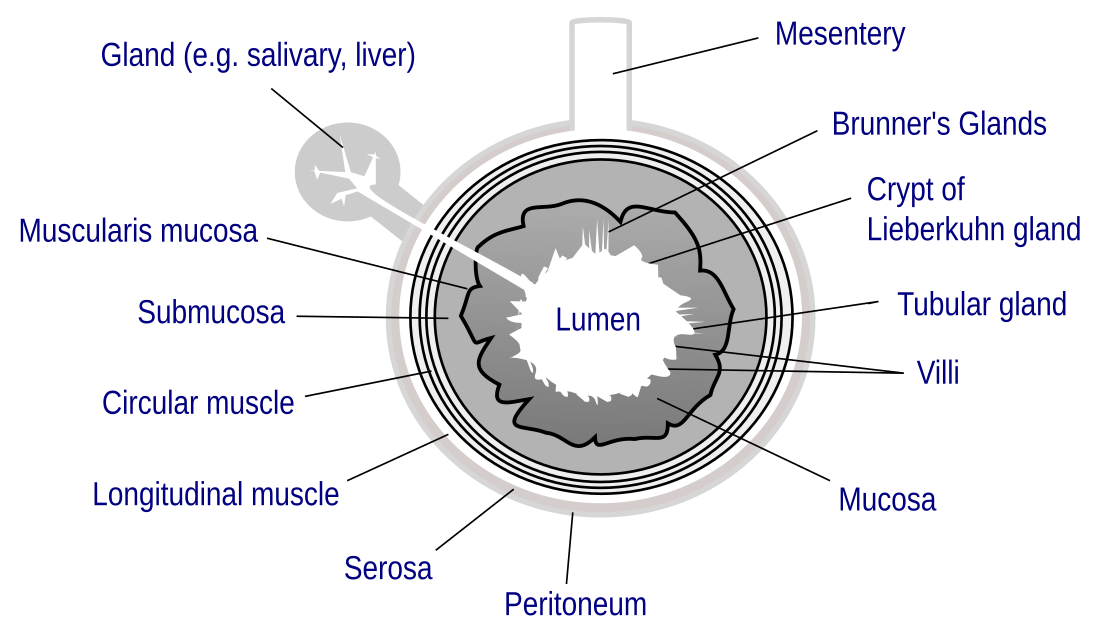Lumen (anatomy)
Cavity within an organ From Wikipedia, the free encyclopedia
In biology, a lumen (pl.: lumina) is the inside space of a tubular structure, such as an artery or intestine.[1] It comes from Latin lumen 'an opening'.


It can refer to:
- the interior of a vessel, such as the central space in an artery, vein or capillary through which blood flows
- the interior of the gastrointestinal tract[2]
- the pathways of the bronchi in the lungs
- the interior of renal tubules and urinary collecting ducts
- the pathways of the female genital tract, starting with a single pathway of the vagina, splitting up in two lumina in the uterus, both of which continue through the fallopian tubes
- the fluid-filled cavity forming in the blastocyst during pre-implantation development called the blastocoel
In cell biology, lumen is a membrane-defined space that is found inside several organelles, cellular components, or structures, including thylakoid, endoplasmic reticulum, Golgi apparatus, lysosome, mitochondrion, and microtubule.
Transluminal procedures
Transluminal procedures are procedures occurring through lumina, including:[citation needed]
- natural orifice transluminal endoscopic surgery in the lumina of, for example, the stomach, vagina, bladder, or colon
- procedures through the lumina of blood vessels, such as various interventional radiology procedures:
- percutaneous transluminal angioplasty
- percutaneous transluminal commissurotomy
See also
- Foramen, any anatomical opening
References
Wikiwand - on
Seamless Wikipedia browsing. On steroids.
